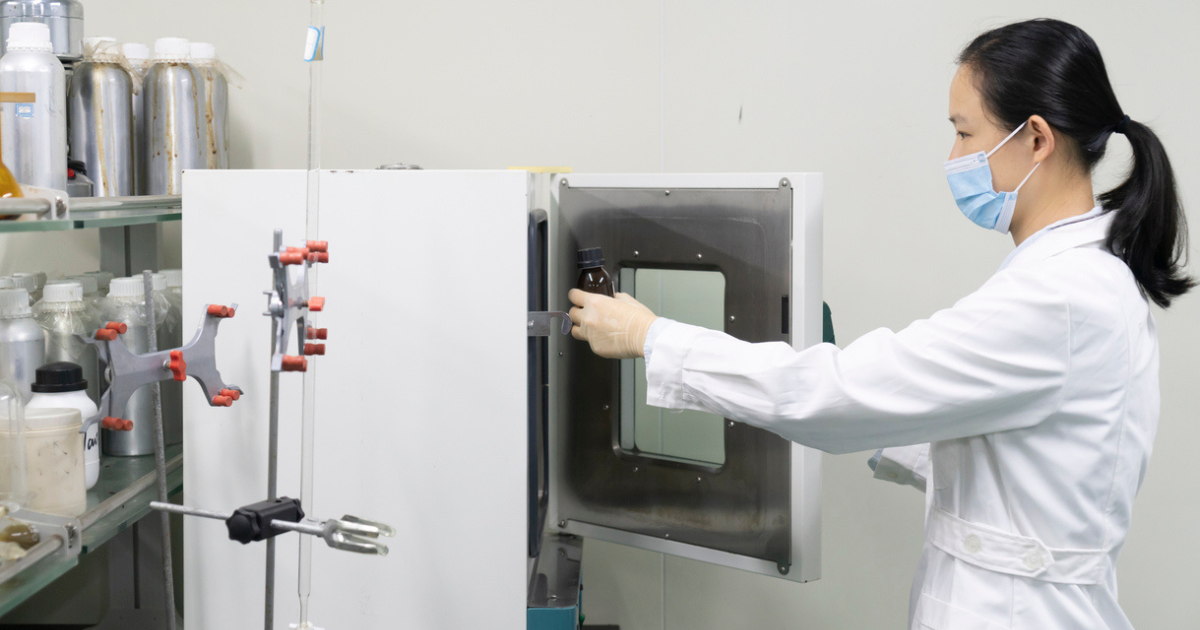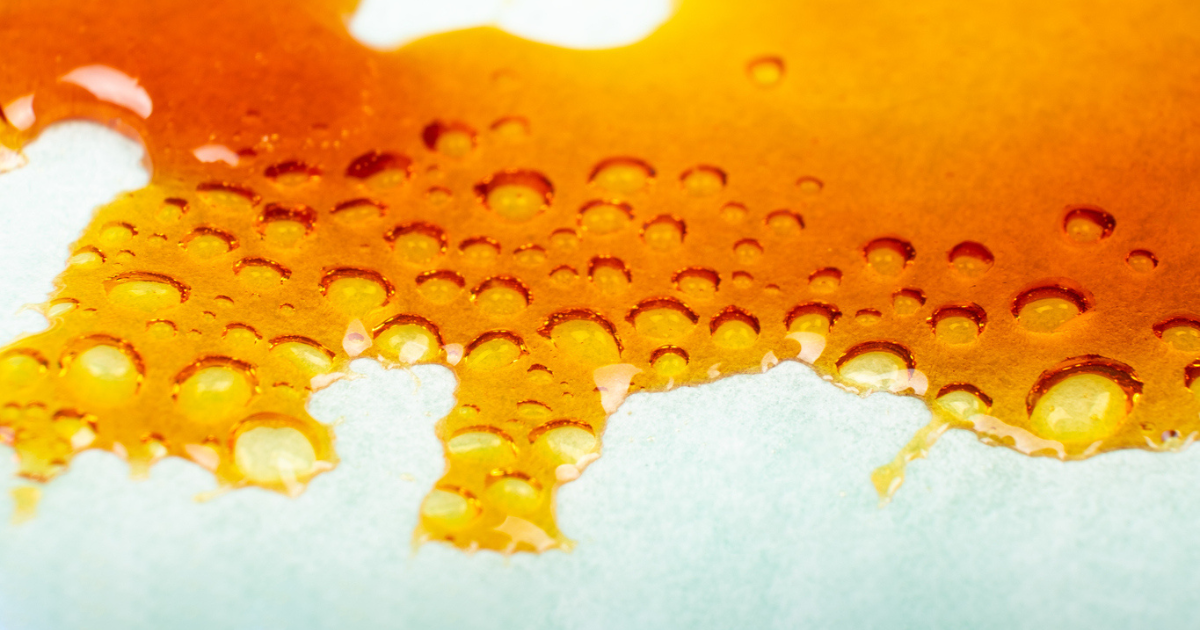Post-Processing with Vacuum Ovens
Posted by USA Lab Equipment on Feb 5th 2025
Getting the most out of your vacuum oven involves more than flipping a switch. It's about dialing in on the right settings to make sure each batch of cannabis extracts, whether it’s crumble, waxes, or shatter, reaches its highest quality.
In this guide, we’ll explore how precise temperature and pressure adjustments can make all the difference in achieving a cleaner, smoother extract. When you get it right, the results speak for themselves.
How Vacuum Ovens Work
Vacuum ovens make post-processing cannabis extracts safer, easier, and more effective. By lowering the pressure inside the oven, solvents evaporate at a lower temperature, allowing you to purge your extract without blasting it with heat that could ruin its flavor or potency.
Here’s how the process generally works:
-
Loading the Oven: The extract is spread evenly on trays to maximize surface area for solvent removal.
-
Vacuum Application: The oven reduces atmospheric pressure, lowering the boiling points of solvents so they evaporate gently.
-
Temperature Control: Precise heat is applied to speed up evaporation without harming the extract.
-
Monitoring and Adjustments: Observing bubbling, color, and texture helps fine-tune the settings to match the extract’s needs.
Now that we’ve covered the basics, let’s explore advanced techniques that will take your vacuum oven skills to the next level.
Breaking the Muffin
When you're working with a vacuum oven to process cannabis extracts, managing the "muffin" effect can make a big difference in the quality of your extract.
In the vacuum oven, lowering the pressure causes your cannabis extract to expand dramatically. This is what we call the "muffin" effect. It’s similar to watching dough rise rapidly in the oven. The trick is to manage this expansion carefully to prevent the extract from touching the sides of the oven, which could spoil its quality.
Start with a low vacuum level to encourage the extract's slow, controlled expansion. This helps you avoid any sudden, uncontrollable swelling. Monitor the expansion closely. You’re looking for a significant swell, but it should not overflow or reach the oven walls.
As soon as the extract nears its peak expansion or gets too close to the oven edges, reduce the vacuum pressure a bit. This will allow the "muffin" to settle back down gently.
Depending on the solvent content of the crude extract and the extract's response, you may need to repeat the expansion and settling process a few times to purge the solvents.
Handling the muffin effect well is all about precision. It helps maximize the surface area of your extract exposed to vacuum, which helps remove as much of the solvent as possible. This cleans up your product and preserves its clarity and consistency.
Slow-Pull Vacuum
The slow-pull vacuum technique is about control and precision in your vacuum oven. This method focuses on gradually reducing the pressure, which helps protect the quality of the extracts by preventing the volatile compounds from degrading.
Start by setting the vacuum slightly higher than your final target and gradually lowering it. This gentle approach helps prevent the rapid boiling and frothing of solvents, which can disrupt the extract's structure and lead to a loss of valuable compounds like terpenes.
Once you’ve established a stable starting point, ease your extract into the pressure change by slowly deepening the vacuum in stages. After each adjustment, allow the system to stabilize before proceeding. This stepwise reduction helps manage how the extract reacts under pressure.
Watch the extract's behavior closely. If you notice excessive bubbling or froth, it's a sign that you may be moving too quickly. Adjust accordingly to maintain a gentle extraction process.

Step Purging
Step purging is a controlled way to fine-tune the extraction process in your vacuum oven. It involves making incremental temperature and vacuum pressure adjustments, allowing for a thorough and careful removal of solvents from cannabis extracts.
Step purging is like turning up a dimmer switch on a light rather than flipping a regular switch. You're gradually increasing the intensity to reach the desired brightness, or in this case, purity. This step-by-step approach avoids degrading the extract’s cannabinoids and terpenes.
Set your oven to a mild temperature and pressure that won't be too harsh on the extracts. This initial setting should begin the solvent evaporation without being too aggressive. After a set period, bump up the temperature slightly. This helps coax more solvent out of the extract gently and effectively.
Then, modify the pressure settings and temperature. Gradually reducing the pressure helps draw out the solvents steadily and prevents the extract from reacting violently. Watch how the extract reacts to each adjustment. If you see too much bubbling or changes in appearance, dial back a bit.
Follow your planned increments until the extraction process is complete. The duration and number of steps will depend on the extract’s characteristics and the amount of solvent.
Temperature Ramping
Temperature ramping is a gentle way to refine cannabis extracts. It focuses on a gradual heat increase to prevent damage to sensitive compounds. This method is especially useful in preserving flavors and potency while thoroughly purging residual solvents.
Imagine you’re slowly turning up a thermostat to warm a room gradually rather than blasting the heat all at once. That's temperature ramping in a nutshell. It involves small, controlled increases in temperature over time, allowing each stage of the process to work effectively without overheating the extracts.
For temperature ramping, you’ll start at a low temperature that's effective enough to start the solvent evaporation but not so high as to cause degradation. Decide on the size of each temperature increase. Small, consistent increments help maintain control over the process.
Set intervals for when you’ll raise the oven's temperature. This could be every 30 minutes or hour, depending on your specific needs and the behavior of the extract.
Closely monitor the extract for any signs of stress, such as excessive bubbling or discoloration, and adjust your approach. If the extract reacts poorly, you may need to modify your temperature increments or the final target temperature.
Pressure Release Cycling
Pressure release cycling in your vacuum oven is a smart approach to removing solvents from cannabis extracts. It’s like a controlled “breathing” technique for your extracts, where you periodically adjust the vacuum pressure to gently release trapped solvents.
This method uses a series of vacuum pressure adjustments. You apply a full vacuum, slightly ease the pressure, and then deepen it again. It's like gently pressing and releasing a sponge to get out every last drop of water.
Start by pulling down to your usual vacuum level to begin the solvent removal process. After holding at this level, slightly increase the pressure (reduce the vacuum) to allow some air back into the chamber. This step shouldn't be drastic. It’s a slight nudge to help loosen any stubborn solvent molecules.
Quickly reapply the vacuum to deepen it once more. When the pressure is eased, this helps pull out the loosened solvents.
Keep an eye on how the extract reacts. Bubbling patterns can tell you a lot about the progress you’re making. Adjust the frequency and magnitude of the cycles based on what you see. Continue these cycles until you're confident that most of the solvent has been removed.

Cold Trapping
Cold trapping is a neat trick used during the vacuum oven processing of cannabis extracts to capture and remove solvents more effectively. This technique uses a cold device to condense solvent vapors, making sure they don't end up back in your product or damage your equipment.
All solvent vapors must pass this cold trap, which cools these vapors down so much that they condense and get stuck in the trap instead of floating back into your extract or through your system.
Place a cold trap between your vacuum oven and the pump. Make sure it can reach temperatures low enough to handle the solvents you’re working with. Run your vacuum oven as you normally would. The cold trap will catch solvent vapors as they are evacuated from the oven.
Monitor your cold trap's capacity and temperature. You should make adjustments if it gets full or isn't cold enough. Consistently check that the trap stays cold throughout the process to make sure it keeps working effectively.
Pulsing
Pulsing is a simple yet effective technique used during vacuum oven processing to enhance the removal of solvents from cannabis extracts. It involves cycling the vacuum pressure on and off, which helps dislodge trapped solvents without compromising the quality of the extract.
Pulsing is like giving your extracts a bit of a breather. By intermittently releasing and reapplying the vacuum, the extracts expand and contract. This movement helps shake loose any stubborn solvent molecules that may cling to the extract.
Apply a strong vacuum at the beginning to pull out the easy-to-remove solvents. Briefly ease the vacuum pressure, allowing the extract to expand slightly. This expansion helps release any solvents trapped deep within. Quickly return to a strong vacuum. The rapid shift helps whisk away the newly freed solvents.
Keep an eye on how the extract responds. Adjust the length and frequency of the pulses based on the amount of solvent you see being released. Repeat the pulsing process until there's minimal solvent visible, usually indicated by reduced bubbling or foaming.
This technique effectively reaches and removes solvents that a constant vacuum might leave behind, especially in thicker or more viscous extracts.
Final Conditioning
Final conditioning is the last step in refining cannabis extracts in a vacuum oven. It ensures that every batch achieves the best possible purity and consistency.
It’s the "cool down" phase in your extraction workout. It's where you gently finalize the product by removing the last traces of solvents and keeping the extract stable and uniform.
Lower the oven's temperature to a gentle setting during the final conditioning. This light warmth helps evaporate any remaining solvents without harming the delicate components of the extract. Dial back the vacuum to a moderate level. This continued, but gentle suction helps pull out the last bits of solvent without disturbing the stabilized extract.
Watch the extract’s texture and consistency during this phase. This observation helps you confirm that the extract settles into the desired final form, whether that's more brittle or pliable. Allow enough time for the extract to stabilize under these conditions. This helps achieve consistency and quality throughout the entire batch.
Fine-Tuning Your Vacuum Oven
Getting the hang of vacuum oven techniques can level up your extraction game. It's about nailing the small details, tuning into each batch's needs, keeping good notes, and being patient. Master these techniques, and you’ll unlock the full potential of your extracts.

